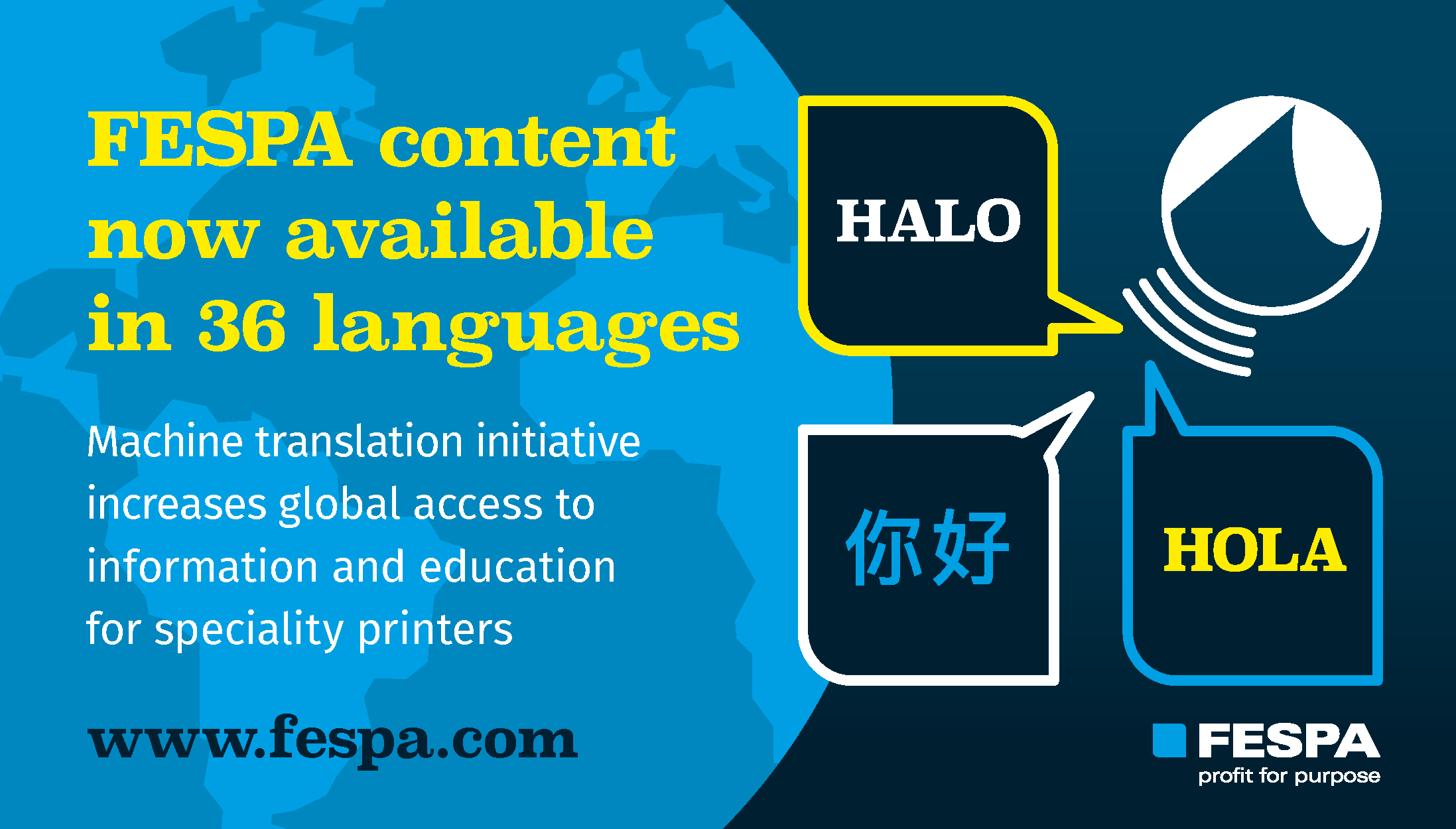Fespa.com content now available in 36 languages
.png?width=750)
Speciality printers worldwide can now access information on the main FESPA website in all the languages spoken by the 37 national FESPA Associations, following an intense programme to localise content on fespa.com.
The initiative has used machine translation software to make the last six months of online content more accessible to FESPA’s global community, at a time when free access to industry news, educational features and guidance on best practice and commercial recovery is critical for so many print businesses.
CEO Neil Felton explains: “FESPA serves a global community, and while we have always aimed to offer our core content in English, German and Spanish, it would previously have been cost-prohibitive to translate all content into all the full range of languages spoken by our members. This machine learning approach to localisation, while not perfect, should help many more printers to make extensive use of our expert content, whatever their spoken language.”
Local editing teams at each of FESPA’s national Associations will work to refine technical translations to improve accuracy and readability over time, and all new content will immediately be available in all languages.
The localised versions of the website are accessible using the drop-down menu on the website landing page. In addition to English, German and Spanish, new options include Afrikaans, Arabic, Bengali, Bulgarian, Chinese, Croatian, Czech, Danish, Dutch, Finnish, French, Greek, Hindi, Hungarian, Italian, Japanese, Korean, Nepali, Norwegian, Polish, Portuguese, Romanian, Russian, Serbian, Sinhala, Slovak, Swedish, Tagalog, Tamil, Thai, Turkish, Ukrainian and Urdu.
Neil Felton adds: “Fespa.com already attracts 73,000 page views every month, and we curate the site to provide a valuable source of information, education and inspiration for speciality printers, with a broad range of content from our own experts and external contributors. With this investment, we aim to extend FESPA’s educational value to more printers all over the world, and make FESPA.com a favourite online meeting point for our global print ‘family’, just as our live events bring us together in the real world.”
Topics
Interested in joining our community?
Enquire today about joining your local FESPA Association or FESPA Direct
Recent news

The importance of ink for large format printers
Ink is crucial for large format inkjet printers, influencing substrate compatibility, productivity, and cost. Nessan Cleary discusses the three main types which include UV-curable ink, latex ink and eco-solvent ink. Each ink type has specific strengths and weaknesses, making printers choice dependent on budget and intended applications.

What are the benefits of Direct-To-Fabric printing?
Direct-to-fabric printing is gaining popularity for high-volume textile production, enabling on-demand, customized short runs. These printers offer ink flexibility, accommodating various fabric types like cotton and silk, though ink development focuses on faster turnaround by reducing pre- and post-processing. Compared to traditional methods, direct-to-fabric inkjet printing is a more sustainable option due to reduced water and chemical usage, and localized production.

What are the opportunities for large format providers regarding digital touch screens?
Digital touchscreens are becoming increasingly common, offering businesses opportunities to improve customer engagement and streamline operations. Nessan Cleary shares, while more expensive to implement than standard digital displays due to complex software and integration needs, touchscreens provide self-service options, multilingual support, and can reduce staffing costs in various settings like retail, transportation, and healthcare.
